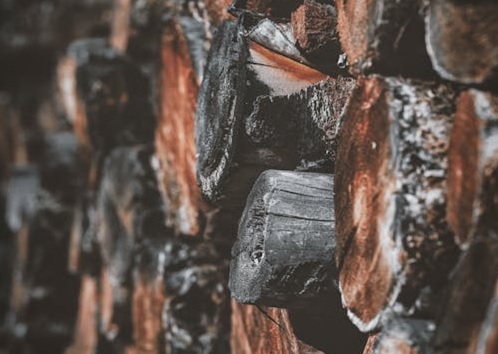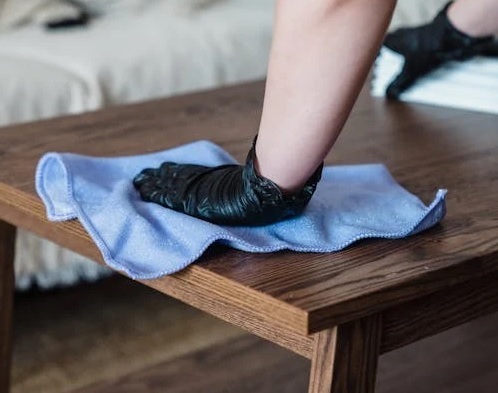The How, What, and When of Wood Veneer: Answering Some Top Questions
Apr 20th 2024
Here at Oakwood Veneer, we specialize in all things wood veneer, from domestics like birch, to rare cuts like burled walnut, and even exotics like purpleheart and zebrawood.
We also have a lot of experience in woodworking, with veneer and in general. Here are some of the most common questions out there, with answers.
What Is Wood Veneer?
Wood veneer is, simply, a very thin slice of wood (usually 1/40” or thinner) pressed onto or laminated onto a backer. There are many common backer materials, including adhesive backers, but phenolic, and more commonly, paper backers, are widely available.
What Is Wood Veneer Made of?
First off, wood veneer is real wood - just a very thin slice of it applied to a backer. Because of this, veneer is easier to use and work with than most solid hardwoods, which can be difficult to cut and mill.
With veneer, all you need to do is cut it to shape, prepare a substrate, use an adhesive to bond it to the surface, and then trim the edges. Wood veneer can then be stained and finished, just like solid wood.
What Is Wood Veneer Used for?
Veneer has many, many applications. It is widely used in furniture and wall paneling, as well as in cabinetry.
Veneer, especially exotic wood veneer and rare cuts of domestics, like burled walnut, are commonly used in inlaying, marquetry, on musical instruments, and on other decorative ornaments, since they are usually much more affordable than solid wood.
Which Wood Veneer Is Best?
That depends entirely on the project. If you are veneering a surface that will get a lot of traffic and use, like a tabletop or furniture, then a hard, durable wood, like oak, ash, walnut, beech, or hickory is best, as these are very hard and scratch resistant.
If the purpose is purely ornamental, then popular burls like burled walnut, oak, mappa burl, and carpathian elm are popular, as are exotics like zebrawood, purpleheart, teak, and mahogany veneer.
How Is Wood Veneer Made/Cut?

Wood veneer is milled at a sawmill just like solid lumber, but following a slightly different process. First, “veneer quality” logs are selected and soaked in a hot water vat to soften the fibers; then, very thin shavings called “leaves” are cut away from their surface.
Multiple cuts are popular, and each is known for the specific grain pattern it produces. Some common cuts are:
- Rotary cut: The log is placed in a lathe and rotated against a cutting edge that shaves away a thin slice. Rotary cut veneer usually exhibits rich figure and undulating grain patterns.
- Flat cut/Flat sawn: A saw or blade is used to shear away a thin slice from the log, parallel to the grain and lengthwise to the log, producing a variegated pattern, often with high arches called “cathedrals.”
- Quarter cut/Quarter sawn: Quarter cut veneer leaves are cut away from the log at an angle perpendicular to the annual growth rings, producing a straight-grained appearance.
- Rift cut: Rift cut veneer has leaves that roughly follow the orientation of the grain, minimizes irregularities and produces a tight grain pattern and little figure.
After being cut, the leaves are then applied to a backer as described in the previous section.
How Long Does Veneer Last?
While veneer is very thin, the funny thing about it is that if it is well-cared far, it can last as long as or longer than solid wood. This is because wood veneer, when applied to a suitable substrate, is not prone to warping, cracking, and checking like solid wood is. With proper care you can expect wood veneer to last for decades if not a lifetime.
When to Clean Veneer?

Like solid wood, veneer must be properly finished, cleaned and properly maintained if you want it to last.
It should be regularly dusted, with a damp cloth or rag, at least once per week. Clean up spills immediately with a damp rag as well.
In addition, preventative maintenance should also be observed. Refrain from placing heavy objects on veneered surfaces for prolonged periods, and whenever placing a hot object (like a mug) on veneer, use a coaster.
When to Use Veneer?
Wood veneer can be used any time that it would be cost-prohibitive or not practical to use solid wood. Veneer is far more affordable than solid wood and in most instances, easier to work with.
Veneer is also a suitable alternative to solid wood when the target species is rare (as in the case of mahogany and teak veneer, among other exotics) or is a select cut, such as in the case of burled walnut, oak, and other burls.
Still Have Wood Veneer Questions? Contact Us!
While these are some of the more common questions surrounding wood veneer and veneer projects, this post only scratches the surface of what there is to know. If you have questions before beginning a project, get in touch with us at 800-426-6018 and we would be more than happy to help.
